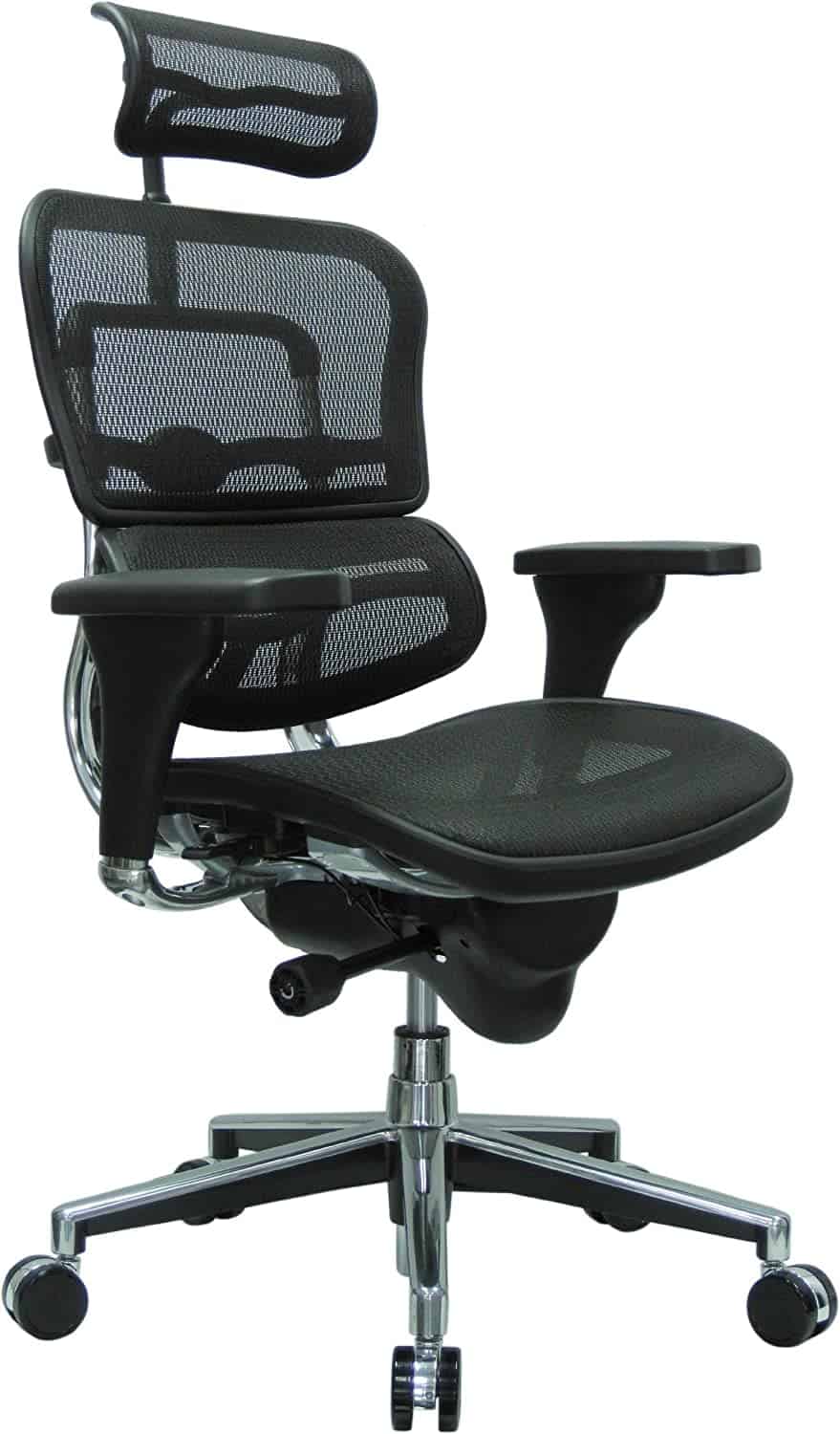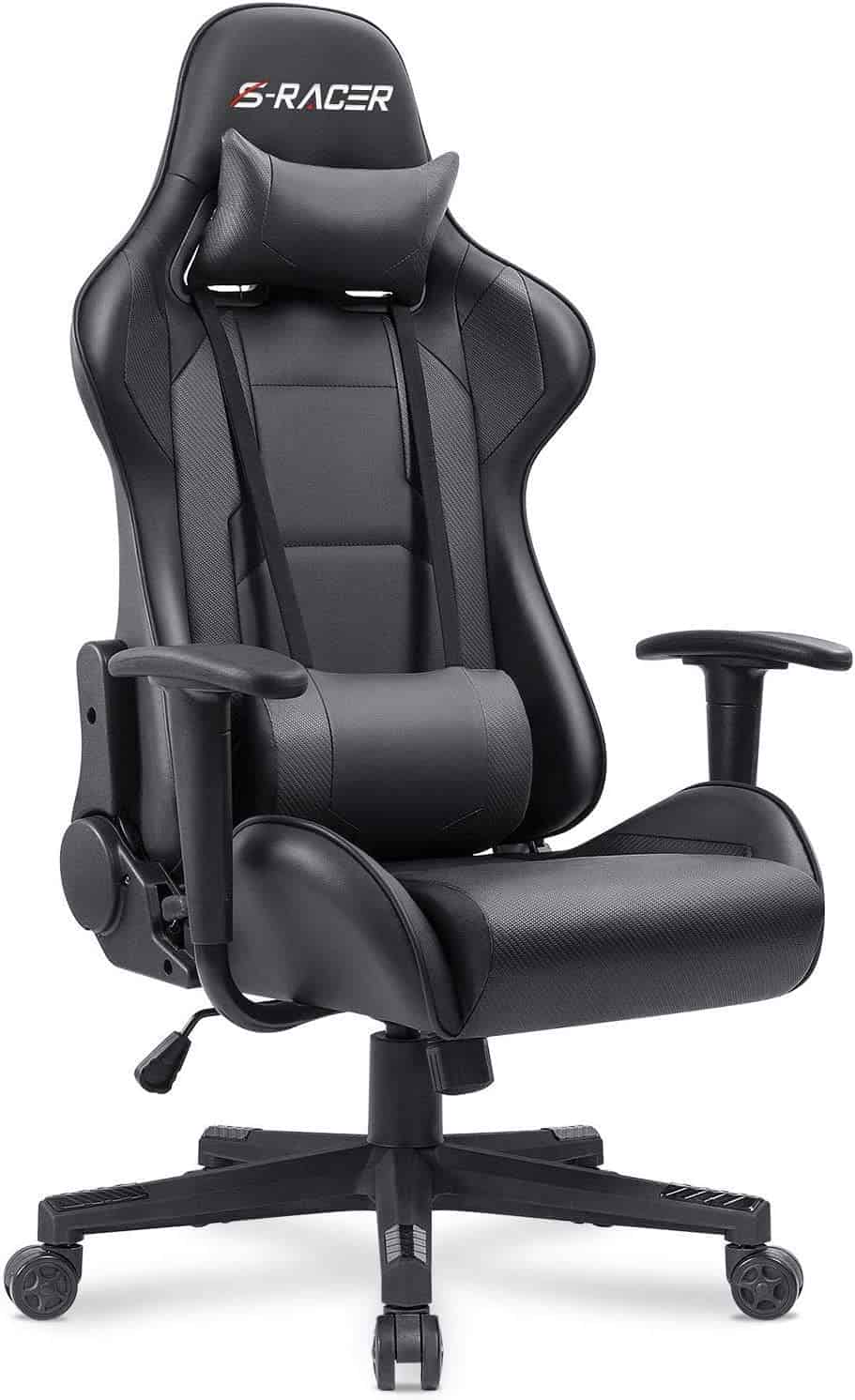
Best Chairs for SI Joint Pain – Top Picks for Home & Office
Looking for relief from SI joint pain while sitting? Discover the best chairs designed for proper support, comfort, and posture throughout the day.
If you’re someone suffering from SI joint pain, you know how important it is to find a chair that can provide comfort and support.
The right chair can make all the difference in your daily life, helping you stay comfortable and pain-free, even when you’re seated for long periods.
But finding the best chair for si joint pain can be a challenging task.
In this blog post, we’ll look at some of the best chairs for Si joint pain and discuss the features that make them particularly effective in relieving pressure on the Si joint and promoting good posture.
Whether you’re looking for the best chair for si joint pain, or the best office chair for si joint pain, we’ve covered you. So, if you’re ready to find a chair to help alleviate your Si joint pain, keep reading!
As an Amazon Associate, we earn from qualifying purchases at no extra cost to you.
Table of Contents
What is Si Joint Pain?

The sacroiliac (SI) joint is a joint in the pelvis that connects the sacrum (the bone at the base of the spine) to the ileum (a bone in the pelvis).
SI joint pain is discomfort or pain that occurs in the SI joint. It can be a sharp or dull pain and may feel worse when you stand up, sit down, or walk.
It may also be accompanied by other symptoms, such as swelling, stiffness, or difficulty moving the joint.
Cause of Si Joint Pain:
SI joint pain is often caused by inflammation or irritation of the joint. This can be due to various factors, including injury or trauma, arthritis, pregnancy, and certain types of back surgery.
It can also be caused by imbalances in the muscles and ligaments surrounding the joint.
Treatment for SI Joint Pain
Treatment for SI joint pain may include rest, ice or heat therapy, physical therapy, medications, and in some cases, surgery.
It is important to see a healthcare provider if you are experiencing SI joint pain to determine the cause and receive an appropriate treatment plan.
Things To Consider When Buying an Office Chair for SI Joint Pain.
Here are the things to consider when buying an office chair to help with SI joint pain:
Adjustability: Look for an office chair with adjustable features, such as height, lumbar support, and armrests. This will allow you to customize the chair to your body and find a comfortable position.
Support: Choose a chair with good back and lumbar support to help alleviate pressure on the SI joint. A chair with a contoured seat and backrest can also be helpful.
Comfort: Consider the overall comfort of the chair. You will likely be sitting in the chair for long periods, so it’s crucial to find one that is comfortable and doesn’t cause additional pain or discomfort.
Material: Look for a chair with a breathable, supportive material. Memory foam or a mesh back can be good options.
Durability: Make sure the chair is built to last. Look for one with a sturdy frame and high-quality materials.
Price: Determine your budget and look for a chair that fits within it. It is worth investing in a higher-quality chair that will provide better support and comfort in the long run.
Return policy: Consider the return policy of the chair in case it does not meet your needs or causes additional pain.
List of Best Chair for Si Joint Pain
1. Herman Miller Aeron Ergonomic Chair

Specifications
- Color: Mineral
- Brand: Herman Miller
- Chair Dimensions: 16.75″D x 27″W x 41″H
- Material: Recycled Material
- Seat heights: 16”-20.5”
- Maximum Weight Recommendation: 300 Pounds
The 8Z Pellicle suspension seat and back feature eight distinct zones of tension that work to provide customized support for your body.
The PostureFit SL backrest supports your spine while maintaining the natural forward tilt of the pelvis.
The adjustable individual pads provide lumbar support and stabilize the base of the spine for a more powerful seated posture.
2. Steelcase Gesture Office Chair
Steelcase Gesture Office Chair

Specifications
- Color: Graphite
- Brand: Steelcase
- Chair Dimensions: 23.63″D x 34.63″W x 44.45″H
- Material: Aluminium, Fabric
- Frame Material: Aluminum
- Maximum Weight Recommendation: 400 Pounds
Pros
- Premium Seat Comfort for All Day Support
- 360 Degree Rotating Arms
- Back Support
- pneumatic seat height adjustment
- Wheels for carpet flooring
Cons
- Costly
3. Herman Miller Embody Ergonomic Office Chair
Herman Miller Embody Ergonomic Office Chair

Specifications
- Color: Black Rhythm
- Brand: Herman Miller
- Chair Dimensions: 24″D x 26″W x 35″H
- Style: Modern
- Frame Material: Alloy Steel
- Maximum Weight Recommendation: 300 Pounds
Pros
- Backfit adjustment
- Adjustable Seat Depth
- Adjustable arms
- Designed for healthful purpose
Cons
- Expensive
4. Steelcase Leap Office Chair
Steelcase Leap Office Chair

Specifications
- Color: Black/Black
- Brand: Steelcase
- Chair Dimensions: 25″D x 27″W x 43.5″H
- Material: Aluminum
- Maximum Weight Recommendation: 400 Pounds
Pros
- Adjustable Lumbar
- Adjustable Height
- Adjustable seat depth
- Lower back firmness control
- 5-position recline lock
- All-day comfort and back support
Cons
- Expensive
5. Ergohuman High Back Swivel Chair
Ergohuman High Back Swivel Chair

Specifications
- Color: Black
- Brand: Ergohuman
- Chair Dimensions: 30″D x 29″W x 50″H
- Seat dimensions:18.5” D x 20.5” W
- Material: Mesh
- Maximum Weight Recommendation: 250 Pounds
Pros
- Feature eight ergonomic adjustments
- Tilt tension control
- Tilt lock
- Adjustable seat height
- Adjustable Height
Cons
- Difficult assembly
6. Homall Gaming Chair Office Chair
Homall Gaming Chair Office Chair

Specifications
- Brand: Homall
- Chair Dimensions: 19.8″D x 20.5″W x 47.8″H
- Frame Material: Metal
- Maximum Weight Recommendation: 300 pounds
- Durable & Reliable
Pros
- Height-adjustable gas spring cylinder
- Easy to move with color caster wheels
- Orthopedically and ergonomically designed
- A headrest pillow and lumbar cushion are included
Cons
- Cheap
7. Cheap Ergonomic Desk Office Chair
Cheap Ergonomic Desk Office Chair

Specifications
- Brand: BestOffice
- Chair Dimensions: 22″D x 22″W x 38″H
- Maximum Weight Recommendation: 250 Pounds
- Frame Material: Stainless Steel
- Form Factor: Metal
Pros
- Ergonomic Armrest
- Breathable Mesh Back
- Solid & Stable
- 360 Degree Swivel & Casters
Cons
- Only 90-days warranty
8. SIHOO Ergonomic Office Chair
SIHOO Ergonomic Office Chair

Specifications
- Color: Black
- Brand: SIHOO
- Chair Dimensions: 25.59″D x 23.62″W x 51.2″H
- Material: Aluminum, Stainless Steel
- Frame Material: PP, Aluminum alloy, Sponges, Mesh
- Maximum Weight Recommendation: 150 Kilograms
Pros
- Adjustable Lumbar
- Adjustable Height
- 2D Armrest
- Head Support
- High Quality & Easy Assembly
Cons
- Hard to assemble
How to Sit with Si Joint Pain?
Here are some tips for sitting with SI joint pain:
Use a chair with good lumbar support: Look for an office chair that has adjustable lumbar support to help alleviate pressure on the SI joint.
Sit with your feet flat on the ground: Keep your feet flat on the ground when you sit to take the strain off your lower back and SI joint.
Keep your knees bent at a 90-degree angle: Avoid crossing your legs or sitting with your knees bent at a sharp angle. This can put additional strain on the SI joint.
Use a cushion or lumbar roll: A cushion or lumbar roll can help provide additional support for your lower back and SI joint.
Avoid sitting for long periods: Try to get up and move around every 30 minutes to an hour. This can help reduce pressure on the SI joint and prevent stiffness.
Experiment with different sitting positions: Every person is different, so try a few different sitting positions to see what works best for you.
How to Sleep with Si Joint Pain?
Here are some tips for sleeping with SI joint pain:
Choose a comfortable mattress: A firm or medium-firm mattress is often recommended for people with back pain, as it provides good support without being too hard.
Use a supportive pillow: A pillow that supports the natural curvature of your neck can help alleviate pressure on the SI joint.
Try sleeping on your back: Sleeping on your back can help take the strain off your SI joint. Place a pillow under your knees to help maintain the natural curvature of your lower back.
Sleep with a pillow between your knees: If you prefer to sleep on your side, try placing a pillow between your knees. This can help reduce pressure on the SI joint.
Avoid sleeping on your stomach: Sleeping on your stomach can put additional strain on the SI joint and cause pain.
Final Thoughts on the Best Chair for Si Joint Pain
Now you’ve got a clear idea about how to sit and sleep with si joint pain and the best chair for si joint pain.
So, why are you waiting for?
Go out there and buy the best chair for si joint pain from the above list to relieve pain and improve your overall quality of life.
Read Further
FAQs
Does sitting make SI joint pain worse?
Sitting for long periods of time can make sacroiliac (SI) joint pain worse for some people.
The SI joints are designed to be relatively stable and have a limited range of motion, but when they become irritated or inflamed, they can cause pain that can be exacerbated by prolonged sitting.
When you sit, the weight of your upper body presses down on the SI joints, which can cause them to become compressed.
This compression can cause the joints to become inflamed and can aggravate any existing pain.
Additionally, sitting can cause muscle imbalances, particularly in the hip, low back, and thigh muscles, which can also lead to SI joint pain.
What is the best sitting position for SI joint pain?
The best sitting position for sacroiliac (SI) joint pain will vary depending on the individual and the specific cause of their pain.
However, there are some general guidelines that may help to alleviate pain and discomfort when sitting.
One key principle is to maintain a neutral spine, which means keeping the natural curvature of the lower back without slouching or hunching forward.
This can help to reduce the amount of pressure and compression on the SI joints.
To achieve a neutral spine position, try to:
Sit back in your chair, keeping your bottom pressed against the backrest.
Adjust the backrest of the chair so that it supports the natural curvature of your lower back.
Sit with your feet flat on the floor and use a footrest if necessary.
Keep your shoulders back and relaxed.
Avoid crossing your legs, as this can cause asymmetrical stress on the SI joints.
Does sitting increase SI joint pain?
Sitting for long periods of time can make sacroiliac (SI) joint pain worse for some people.
The SI joints are designed to be relatively stable and have a limited range of motion, but when they become irritated or inflamed, they can cause pain that can be exacerbated by prolonged sitting.
When you sit, the weight of your upper body presses down on the SI joints, which can cause them to become compressed.
This compression can cause the joints to become inflamed and can aggravate any existing pain.
Additionally, sitting can cause muscle imbalances, particularly in the hip, low back, and thigh muscles, which can also lead to SI joint pain.
What should I avoid if I have SI joint pain?
If you have sacroiliac (SI) joint pain, there are certain activities and positions that you may want to avoid in order to reduce your pain and discomfort. These can include:
1. Prolonged sitting: Sitting for long periods of time can cause compression of the SI joints and can aggravate pain. Try to take frequent breaks to stand up and move around.
2. High-impact activities: High-impact activities such as running or jumping can put a lot of stress on the SI joints and can make pain worse.
3. Twisting and bending: Twisting or bending at the waist can put extra strain on the SI joints and can increase pain.
4. Heavy lifting and carrying: Lifting or carrying heavy objects can also place extra stress on your SI joints, and should be avoided, especially if the weight is held on one side of the body, it can cause imbalance and can worsen the pain.
5. Certain types of exercises: Some exercises that can be particularly hard on the SI joints include deep squats, lunges, and leg press. You should consult with a physical therapist to find out which exercise is safe and appropriate for your condition
6. Certain Sleeping Positions: Sleeping on your stomach can put extra strain on the SI joints, you may find that it’s more comfortable to sleep on your back or side with a pillow between your knees to support your lower back.


